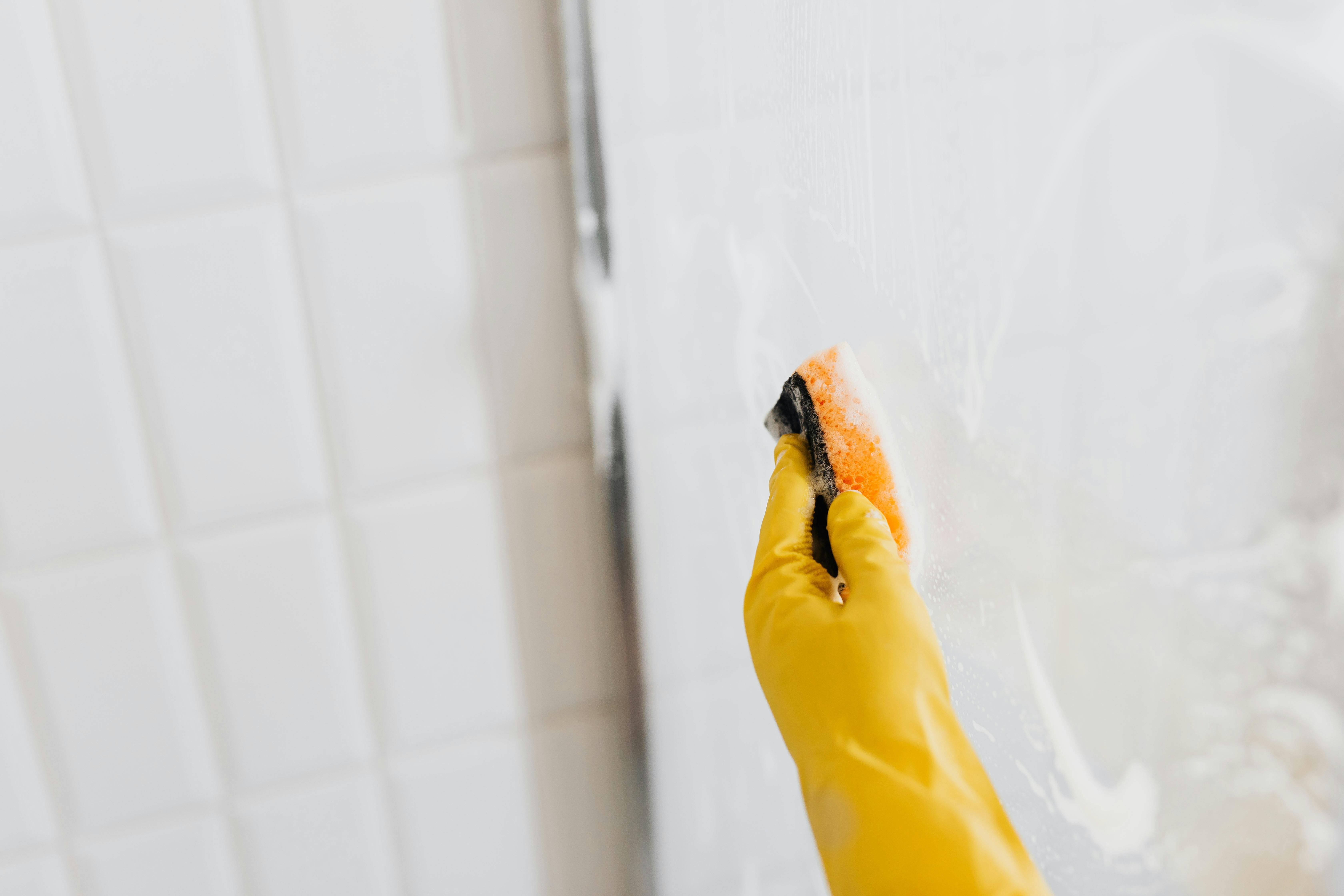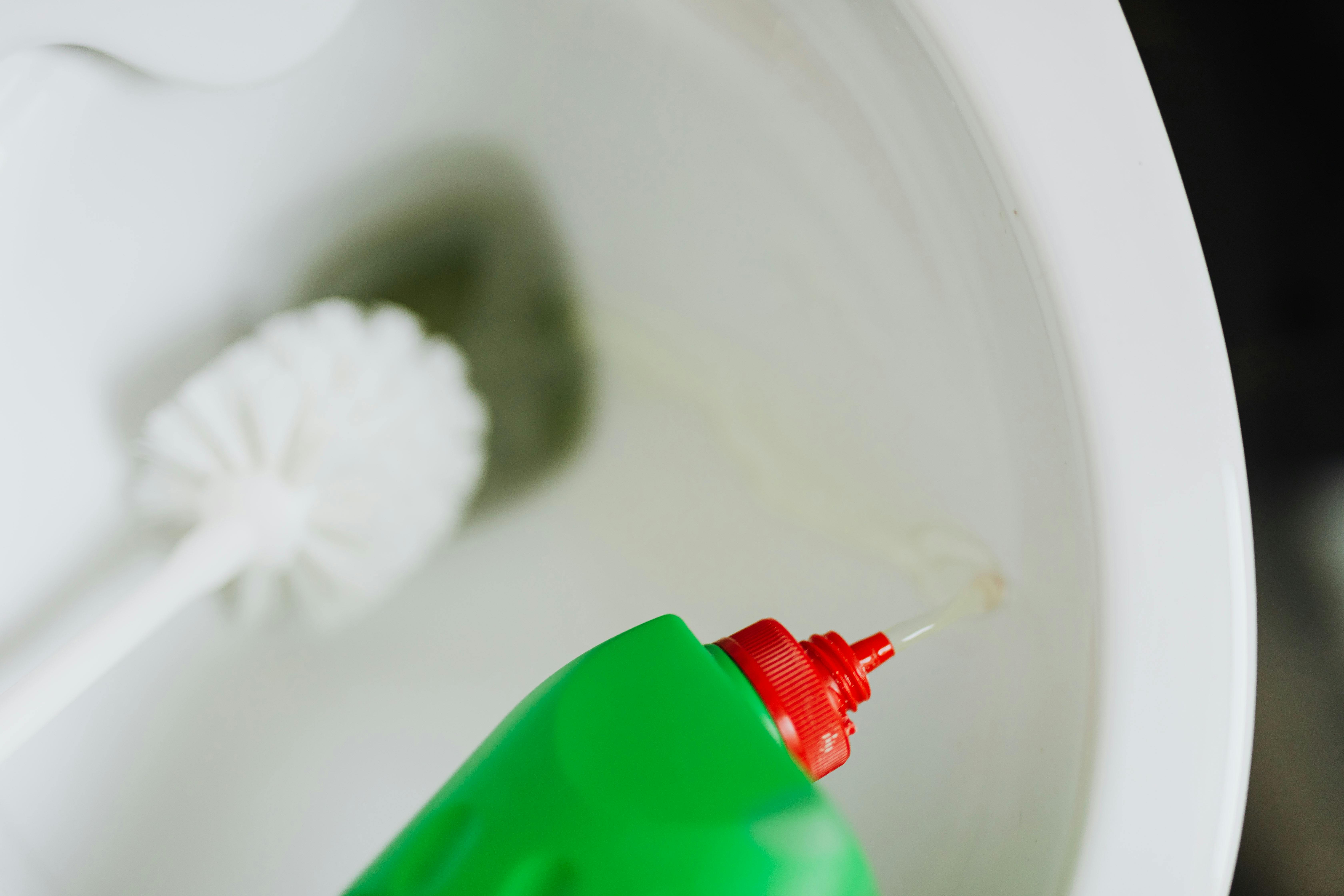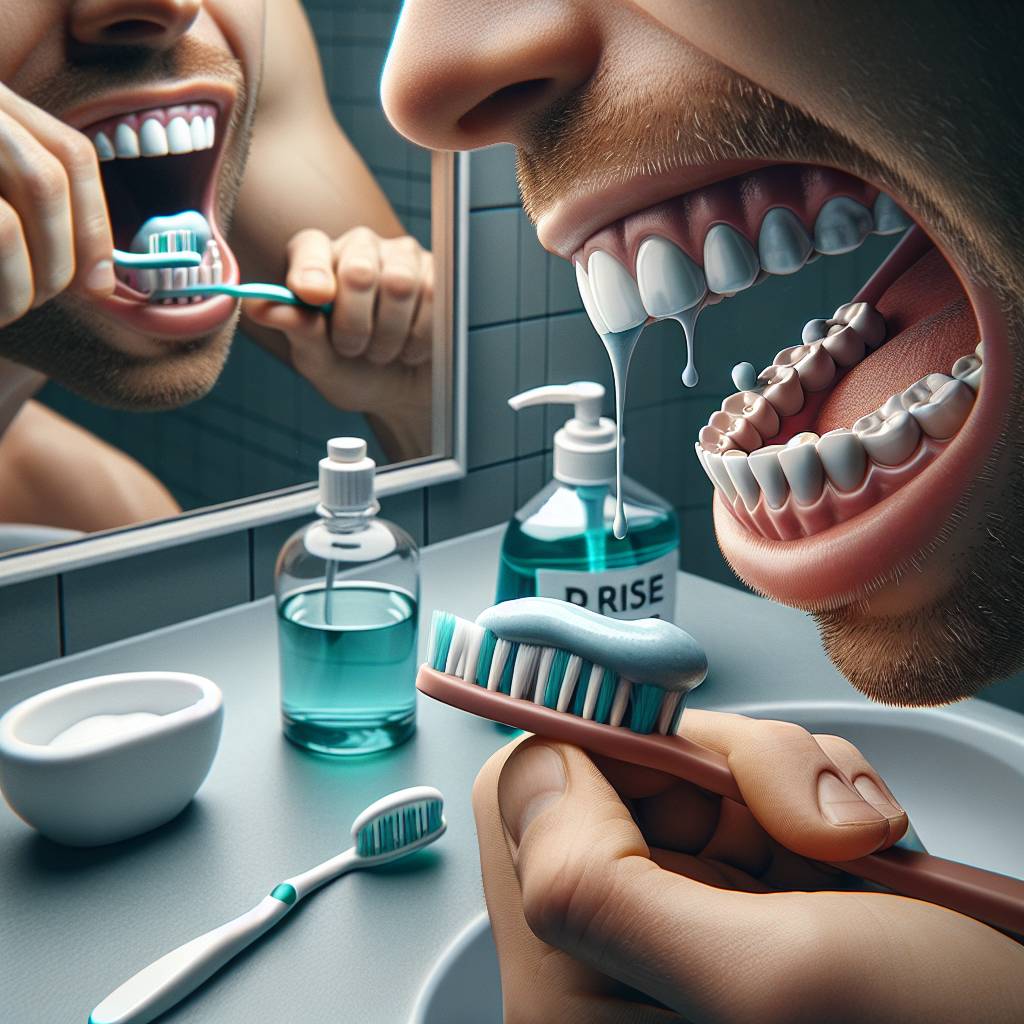Good oral hygiene is essential to keeping your teeth and gums healthy. Plaque is a sticky film of bacteria that accumulates on the surface of teeth. It is important to remove plaque regularly to prevent it from hardening into tartar, which can lead to various dental problems, such as cavities and gum disease. Fortunately, there are several ways to remove plaque from your teeth at home without having to visit a dentist. In this article, we will discuss how you can remove plaque from your teeth at home.Removing plaque from teeth at home is a simple and effective way to maintain good oral hygiene. Start by brushing your teeth twice a day for two minutes each time using a soft-bristled toothbrush. Use toothpaste with fluoride to help reduce plaque buildup. Flossing daily is also important to remove plaque between teeth and along the gum line. It is also beneficial to use an antiseptic or plaque-fighting mouthwash to help prevent the buildup of bacteria and plaque in your mouth. Additionally, try to limit snacks and drinks high in sugar as these can lead to an increase in plaque formation. Lastly, make sure you visit your dentist for regular checkups and professional cleanings as they are the most effective way of removing tough plaque from teeth.
Removing Plaque at Home
Plaque is a sticky substance that builds up on your teeth over time. It is composed of bacteria, food particles, and saliva. If left unchecked, plaque can lead to serious dental health issues like tooth decay, gum disease, and bad breath. Removing plaque at home is important for maintaining good oral hygiene and preventing these problems from developing. Here are some of the benefits of removing plaque at home:
The first benefit of removing plaque at home is that it helps to prevent cavities. Plaque buildup can weaken tooth enamel and lead to cavities. Regular brushing and flossing can help prevent plaque buildup and reduce the risk of cavities.
Another benefit of removing plaque at home is that it helps to reduce bad breath. Bacteria in plaque can cause bad breath or halitosis. Removing this bacteria with regular brushing and flossing helps reduce bad breath significantly, making it easier to maintain fresh breath throughout the day.
Finally, removing plaque at home helps keep gums healthy as well. Plaque buildup on the gums can cause inflammation and discomfort known as gingivitis or gum disease if left unchecked. Regular removal of plaque helps to keep gums healthy by reducing inflammation and preventing gum disease from developing in the first place.
In conclusion, removing plaque from your teeth at home is an important part of maintaining good oral hygiene and overall health. It helps prevent cavities, reduce bad breath, and keep gums healthy. Regular brushing and flossing are key to keeping your teeth free from harmful bacteria that can lead to long-term dental issues down the road.
Plaque
Plaque is a sticky film of bacteria that forms on the surface of teeth. It can be colorless or yellow-white in color, and it is made up of bacteria, food particles, and saliva. Plaque can build up on the teeth over time if it isn’t removed through regular brushing and flossing. If left untreated, plaque can cause cavities, gum disease, and bad breath. In order to prevent these issues from occurring, it is important to brush and floss regularly in order to remove plaque buildup. Additionally, regular visits to the dentist are recommended in order to have a professional clean your teeth and remove any plaque that may have accumulated.
It is important to note that plaque is not only found on the surfaces of teeth. It can also form on dentures, bridges, implants, and other dental restorations. In addition to causing cavities and gum disease, plaque can also lead to staining of the teeth as well as tartar buildup over time. Regular brushing and flossing is still essential in preventing these problems from occurring.
Common Causes of Plaque Build-up
Plaque build-up is a common dental problem caused by bacteria in the mouth. It forms a sticky, clear film on teeth that can lead to tooth decay and gum disease if not treated properly. Plaque build-up is caused by a combination of factors, including poor oral hygiene, sugary foods and drinks, smoking, and inadequate saliva production. Poor brushing and flossing habits can also contribute to plaque build-up.
Poor oral hygiene is one of the most common causes of plaque build-up. When food particles are not completely removed from the teeth and gums with regular brushing and flossing, bacteria in the mouth feed on them and form plaque. Sugary foods and drinks are another source of bacteria that can contribute to plaque build-up. Consuming large amounts of sugar can create an acidic environment in the mouth that increases bacterial growth. Smoking is also linked to an increase in plaque formation due to the chemicals in cigarettes that can weaken the enamel on teeth. Finally, inadequate saliva production or dry mouth can also increase bacterial growth leading to more plaque formation.
Maintaining good oral hygiene habits is essential for preventing plaque build-up. Regular brushing with fluoride toothpaste twice a day for two minutes each time helps remove food particles from the teeth before bacteria have a chance to feed on them. Flossing at least once a day helps remove food particles from between teeth where they cannot be reached with a toothbrush. Additionally, avoiding sugary foods and drinks, smoking cessation if applicable, drinking plenty of water throughout the day, and using an alcohol-free mouthwash daily are all important steps for preventing plaque buildup.
Tools and Supplies Needed for Removing Plaque at Home
Removing plaque from your teeth at home is an important part of maintaining a healthy smile. To do this, you will need to have the right tools and supplies on hand. This includes a toothbrush, toothpaste, dental floss, mouthwash, and a tongue scraper. You may also want to invest in an electric toothbrush or a water flosser for more effective plaque removal.
A soft-bristled toothbrush should be used twice a day to remove plaque and food debris from your teeth. Make sure to brush all surfaces of your teeth thoroughly and avoid brushing too hard or too often as this can damage your enamel. When choosing toothpaste, look for one that contains fluoride as this will help to protect your teeth against decay.
Dental floss is essential for removing plaque between your teeth where your toothbrush can’t reach. Use dental floss at least once a day to keep food particles and bacteria from accumulating in these areas. Be sure to use gentle strokes when flossing so that you don’t damage your gums.
Mouthwash can help to reduce the amount of bacteria in your mouth which helps prevent plaque buildup. Look for an antiseptic mouthwash with fluoride that is formulated specifically for oral hygiene purposes. Swish it around in your mouth for 30 seconds before spitting it out after brushing and flossing.
A tongue scraper is another tool that can help remove bacteria from the surface of the tongue and reduce bad breath caused by bacteria buildup in the mouth. It is recommended that you use a tongue scraper each time you brush and floss your teeth in order to get the most benefit from it.
Finally, an electric toothbrush or water flosser can provide more effective plaque removal than manual brushing alone. An electric toothbrush has spinning bristles that are designed to loosen plaque while a water flosser uses pressurized water jets to clean between teeth and around braces or other dental work without damaging them.

Proper Tooth Brushing Techniques for Removing Plaque
Brushing your teeth correctly is essential for good oral hygiene and removing plaque buildup. Plaque is a sticky film of bacteria that forms on the tooth surfaces, and it can eventually lead to cavities and gum disease. Proper brushing techniques can help to remove plaque buildup and prevent cavities from forming. Here are some tips for brushing your teeth correctly:
Start by choosing a toothbrush with soft bristles. Use a pea-sized amount of toothpaste on the brush, and brush your teeth in a gentle circular motion. Make sure to brush all surfaces of the teeth, including the backside of the back teeth. Spend about two minutes brushing your teeth, twice a day.
To reach plaque in between teeth, use dental floss or interdental brushes. Flossing should be done at least once per day to remove food particles and plaque from between the teeth where a toothbrush cannot reach.
Finally, finish with an antiseptic mouthwash to help reduce bacteria that causes plaque and bad breath. Mouthwash can also help reduce inflammation in the gums caused by plaque bacteria.
By following these simple steps, you can keep your smile healthy and bright by removing stubborn plaque buildup from your teeth!
Foods to Avoid in Order to Prevent Plaque Build-up
It is important to pay close attention to your diet if you want to reduce plaque build-up in your mouth. Plaque is a sticky film that forms on your teeth and is full of bacteria. If it is not removed, it can lead to several dental issues, such as cavities, gingivitis, and even periodontal disease. To avoid this buildup and keep your teeth healthy, it is important to limit certain foods from your diet.
The main culprits of plaque build-up are sugary and starchy foods. Sweets, soda, candy, and pastries are all filled with sugar that can linger on the teeth and turn into plaque. Similarly, starchy foods like potatoes, chips, breads, and crackers can also cause plaque buildup. These starches contain carbohydrates that break down into sugars which feed the bacteria in the mouth.
Another type of food that should be limited when trying to prevent plaque buildup are acidic foods and drinks. Citrus fruits like oranges or lemons can have a high acid content that erodes enamel on the teeth. This erosion makes it easier for bacteria to stick around on the surface of the teeth which leads to an increase in plaque build-up.
Foods high in fat should also be avoided when trying to reduce dental plaque formation. Fatty foods contain oils that tend to stick around on the surface of the teeth for much longer than other types of food particles due to their sticky consistency. This can create a breeding ground for bacteria which leads to more plaque formation over time.
Finally, processed meats like bacon or pepperoni should be avoided if you want to reduce dental plaque build-up in your mouth. These types of meats contain a lot of salt which increases saliva production in the mouth which then helps break down food particles into sugars that feed bacteria causing increased levels of plaque formation over time.
By following these simple dietary tips you can help keep your mouth clean from unwanted dental plaque buildup and maintain good oral health long term!
Use of Mouthwash to Help Remove Plaque
Mouthwash can be effective in helping to remove plaque from teeth and gums. It is important to use the correct type of mouthwash in order to achieve maximum effectiveness. Antimicrobial mouthwashes are especially effective at removing plaque, as they contain ingredients that target and kill bacteria that cause plaque. Other types of mouthwash, such as fluoride-based ones, can also help reduce plaque, but are not as effective at removing existing plaque.
When using antimicrobial mouthwashes, it is important to follow the instructions on the label carefully in order to get the most out of the product. Generally speaking, it is recommended that mouthwash be used at least twice a day after brushing and flossing for maximum effectiveness. It is also important to remember that using too much mouthwash can be counter-productive, as it could cause irritation or dryness in the mouth.
It is also important to note that while using a mouthwash can help remove plaque from teeth and gums, it cannot replace regular brushing and flossing. Brushing and flossing are essential for preventing and reducing plaque buildup, as they remove food particles and other debris that bacteria feed on. Additionally, regular dental checkups should be scheduled with a dentist or hygienist in order to ensure that any potential issues with teeth or gums are addressed quickly and effectively.

Conclusion
Brushing and flossing regularly is the best way to remove plaque from teeth. Regular brushing and flossing helps to keep plaque from hardening into tartar, which is more difficult to remove. Additionally, avoiding sugary foods and drinks, using mouthwash, and scheduling regular dental cleanings are all effective ways to maintain healthy teeth.
By following these steps, you can easily keep your teeth plaque-free and help prevent more serious dental problems such as gum disease or cavities. Taking proper care of your teeth can also help improve your overall health and quality of life.

